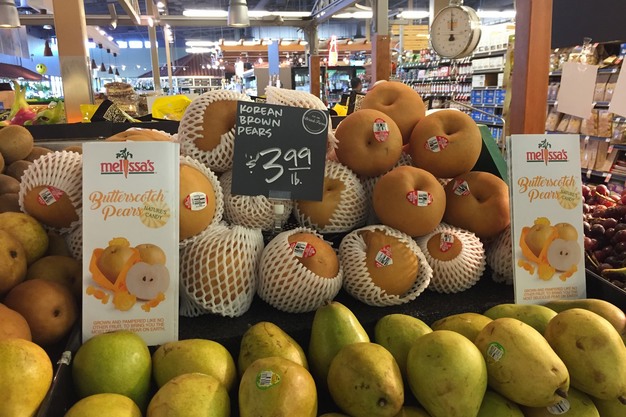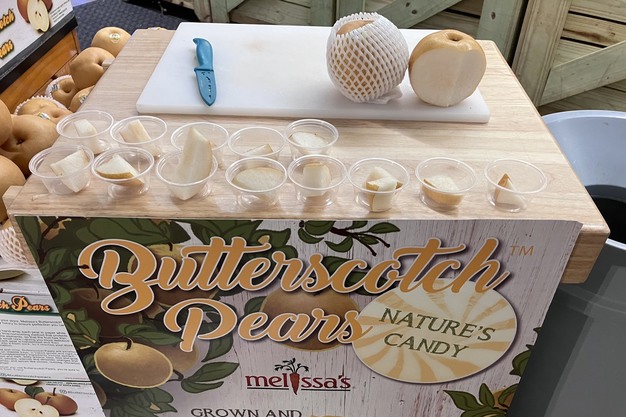Supply of Butterscotch pears, a fruit that is part of the Asian pear family, continues to grow in the U.S. “This year we’re going to increase supply from previous years by about 10 percent and on average, we’ve seen growth between 10-20 percent since we started bringing them in 13 years ago,” says Robert Schueller, director of public relations for Melissa's/World Variety Produce. Melissa’s has also extended the season it brings in the fruit--initially, it was just imported from November to January.

The Butterscotch pear--named for its thin golden skin--is a premium larger-sized Asian pear that has the crunch of an apple and the core is edible. It's imported from South Korea and the company brings it in from November through March. That timing works well given the California Asian pear season is finished at that time.
Platter-friendly fruit
Demand is good for the pear in the holiday season, partly because it’s an item that works well when featured in platters and other holiday dishes given the pear doesn’t oxidize. “Some retailers even sell it by the case--typically a case is 11-12 count,” says Schueller.

However, the start of the new year is also likely to see stronger demand for the Butterscotch pear. “Demand continues to increase in January because that’s when people increase their consumption of fruit and vegetables. The domestic supply of pears isn’t as strong at that time as well and there are also other events in February featuring these pears,” he says, noting they include Lunar New Year particularly as well as Superbowl and Valentine’s Day.
As for pricing, it’s similar to last year at this time though given the size of the pear, it tends to see more premium pricing. “Its only other competing pear is the other imported Asian pears that are being brought in from Chile though they seem to be very expensive currently. Chilean Asian pears are about 60 percent of the size of the Butterscotch pear,” says Schueller.
 For more information:
For more information:
Robert Schueller
Melissa’s Produce
Tel: +1-800-588-1281
roberts@melissas.com
www.melissas.com
